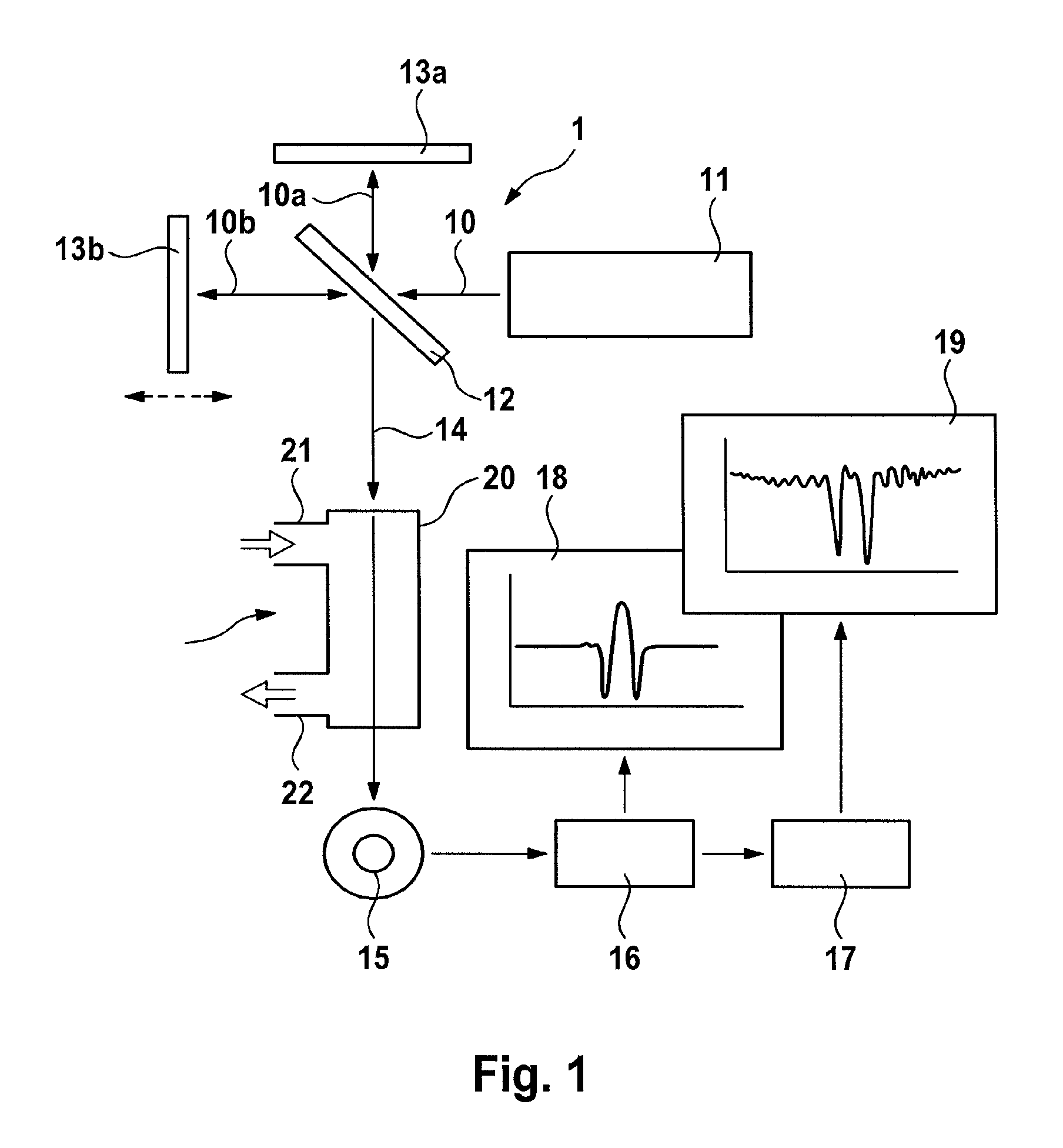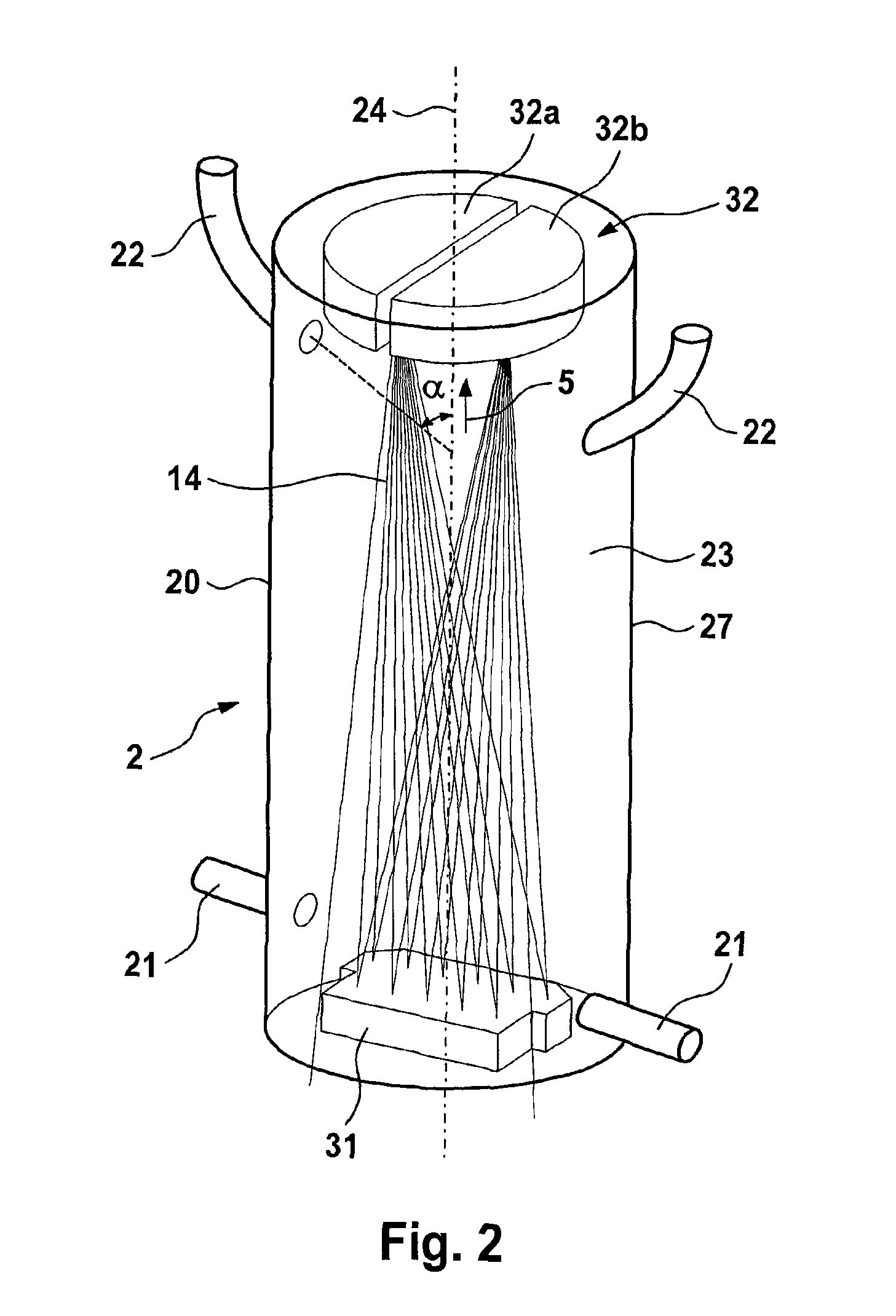Gas cell for the optical analysis of gases
a gas analysis and gas cell technology, applied in the direction of optical radiation measurement, instruments, spectrometry/spectrophotometry/monochromators, etc., can solve the problems of increasing the exchange time, the time resolution and therefore the conflicting objectives of detection sensitivity, and the dynamic response to decrease correspondingly, so as to improve the dynamic response of the measuring cell and achieve fast gas exchange , the effect of small siz
- Summary
- Abstract
- Description
- Claims
- Application Information
AI Technical Summary
Benefits of technology
Problems solved by technology
Method used
Image
Examples
Embodiment Construction
[0031]The invention is explained using the example of an FTIR spectrometer. FTIR stands for Fourier transform infrared spectroscopy. Such devices are known from prior art and will therefore be only briefly explained with reference to FIG. 1.
[0032]An infrared light beam 10 (IR beam) from a source 11 for infrared radiation is focused onto an obliquely disposed beam splitter 12 of an interferometer, which is collectively designated by reference numeral 1. The IR beam 10 is divided into two components 10a and 10b, of which component 10a is reflected by the beam splitter 12 to a fixed mirror 13a, and component 10b is allowed to pass through to a movable mirror 13b, whose distance from the beam splitter 12 can be altered (symbolized by the dashed double-headed arrow in FIG. 1). The partial beams 10a, 10b reflected back by the mirrors 13a, 13b, interfere at beam splitter 12 and are together radiated as IR measuring beam 14 into a gas cell 2.
[0033]The gas cell 2 is the actual measuring cell...
PUM
| Property | Measurement | Unit |
|---|---|---|
| angle | aaaaa | aaaaa |
| diameter | aaaaa | aaaaa |
| length | aaaaa | aaaaa |
Abstract
Description
Claims
Application Information
 Login to View More
Login to View More - R&D
- Intellectual Property
- Life Sciences
- Materials
- Tech Scout
- Unparalleled Data Quality
- Higher Quality Content
- 60% Fewer Hallucinations
Browse by: Latest US Patents, China's latest patents, Technical Efficacy Thesaurus, Application Domain, Technology Topic, Popular Technical Reports.
© 2025 PatSnap. All rights reserved.Legal|Privacy policy|Modern Slavery Act Transparency Statement|Sitemap|About US| Contact US: help@patsnap.com



